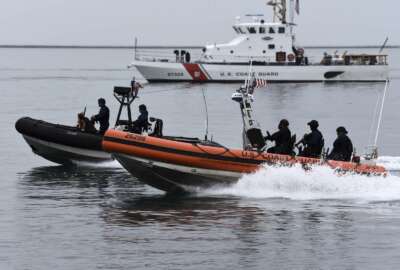Ask Coast Guard Commandant Karl Schultz about his biggest, insurmountable challenge in a sea of seemingly difficult problems and he’s quick to give an answer.
“One of the things that I see as the biggest challenge facing my successors, the 27th, 28th, 29th commandant, is talent management,” he said Tuesday at the Center for Strategic and International Studies. “It’s a competitive workplace.”
And new benefits flexibilities, initially designed to make military service more attractive to young enlistees, pose greater problems for Schultz and other service leaders looking to later retain top mid-career talent.
The blended retirement system, which the Thrift Savings Plan made available to the uniformed services back in 2018, gives new members access to the TSP that vests after two years. Members who stay for 12 years get a continuation bonus and a defined benefit pension after 20 years.
“A young Coastie [or] a young Marine looks around and says hey, do I really want to continue to serve here?” Schultz said. “It used to be … at about eight or nine years if you had a Coast Guardsman at that point you probably had them until 20 years, because they wanted to get a little bit of return on their investment.”
Schutlz isn’t advocating for all Coast Guardsmen to devote 20 years or more of their careers to the service, but the new retirement flexibilities, in some ways, make his job more difficult. Private sector offers to top talent at the Coast Guard become more appealing when mid-career men and women can more easily take their retirement benefits with them after eight or nine years of service.
“They offer that smart Coast Guardswoman $150,000 to stay in place,” Schultz said. “She has a spouse who’s working and kids who are happy; that’s pretty challenging for us. Our retention models under the old [retirement system] was about 40% of our enlisted people went to 20 years [and] 60% of our officers. That’s going to be very challenging for the Coast Guard.”
A March study from the RAND Corporation, commissioned by the Coast Guard, found active-duty enlisted women were 12.3% less likely to stay in the service after 10 years than their male counterparts.
“We’re trying to be more competitive for our women colleagues,” Schultz said.
For example, the Coast Guard is trying to place officers and their active-duty spouses together on common assignments in similar locations, Schultz said, so families can more easily stay together and plan their careers.
The service is also actively finding replacements for Coast Guardsman who temporarily leave to have or foster a new child.
“If you stepped out to have a child … you’d be away for a long time,” Schultz said. “Your 25 shipmates pick up the slack for a good part of your departure. Now we’ll actually put a reservist behind you, so you can go start your family or have a second or third child … and come back to the workplace.”
In addition, the Coast Guard recently rolled out new a body composition program for women members. The service used to discharge women based on body mass requirements at a rate that was three-to-four times higher than men, Schultz said.
The retention data for young men and women in the Coast Guard is especially troublesome for Schultz, considering the service’s budget has remained relatively flat over the past eight-to-nine years. Tight budgets make it difficult for the Coast Guard to adopt new retention incentives or boost current ones.
“We have to have a great brand,” Schultz said. “We have to focus on the Coastie, their families [and] health care. We cap out about 50% of tuition assistance. That’s a choice, but in a flat budget environment it’s one of those tough choices that we make.”
A greater emphasis on diversity and inclusion within the service is part of the Coast Guard’s brand-building.
Miguel Joey Aviles, chief of the Coast Guard’s Office of Diversity and Inclusion, said he’s trying to steer the conversation away from just the diversity numbers and focus more on developing an inclusive work environment.
He’s working with the Coast Guard’s top senior executives to pay more attention to the workplace environment.
“We’re focusing on our managers,” Aviles said. “[We’re] equipping them to better implement solutions at the unit level, to create workplace environments that are engaging, that are inclusive and that are founded in belonging.”
With help from a contractor, the Coast Guard is also developing a six-month diversity and inclusion certification for the service’s unit leaders and managers.
“We’re going to create 125 individuals who will be certified, just similar to Georgetown, Harvard University and Cornell, to develop [diversity and inclusion] initiatives across the organization,” Aviles said.
These practitioners will teach the 825 unit leaders within the Coast Guard to better understand and then translate the Federal Employee Viewpoint Survey data and other organizational feedback into actionable goals and activities, Aviles said.
It’s all part of the Coast Guard’s ongoing efforts to focus on “justice, equity, diversity and inclusion,” or JEDI, according to Aviles.
“It’s paying attention to that workplace environment,” he said. “You can have the latest computers. You can hire people quickly. But if you have a poor workplace environment, you will have poor results as an organization.”
Copyright
© 2024 Federal News Network. All rights reserved. This website is not intended for users located within the European Economic Area.
